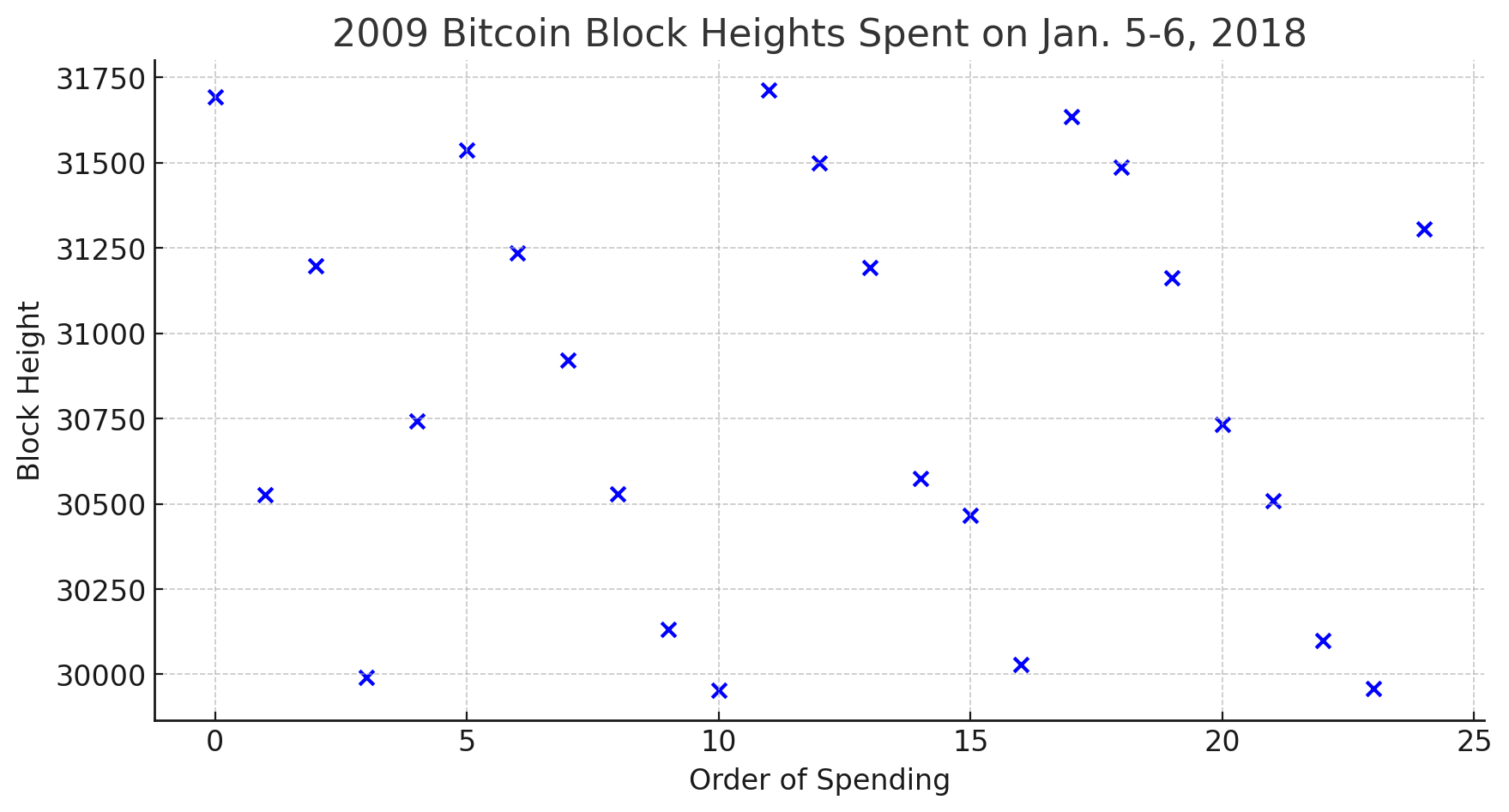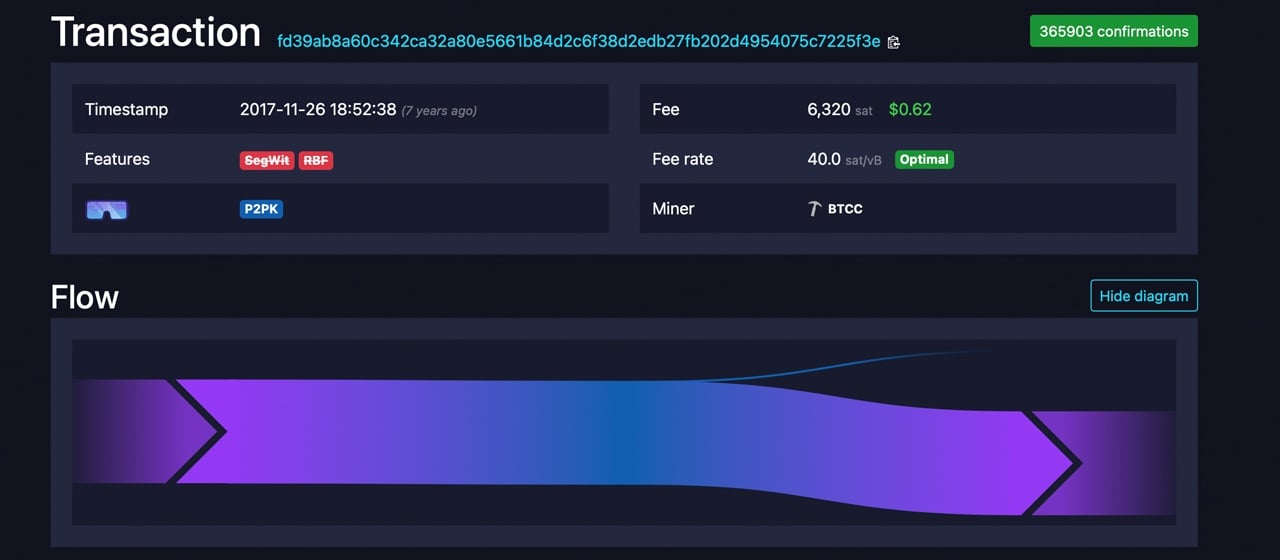A Detailed Analysis of Ancient 2009 Bitcoin Wallet Spending Since 2015
 news.bitcoin.com 21 September 2024 15:30, UTC
news.bitcoin.com 21 September 2024 15:30, UTC On Friday, Sept. 20, 2024, blockchain detectives were left stunned when five dormant bitcoin wallets from 2009 suddenly became active. In a fascinating twist, exactly nine years earlier on Sept. 20, 2015, a single block reward from 2009 was spent, with the owner transferring block height 2,800 along with several other block rewards. Since then, it’s been a rare sight to witness 2009-mined bitcoins being transferred, making Friday morning’s five transactions all the more noteworthy.
Exploring the Spending Trends of 2009 Bitcoin Wallets Over the Past Decade
Bitcoin.com News recently covered the movement of Satoshi-era blocks on Sept. 20, 2024. The addresses in question (1, 2, 3, 4, 5) held bitcoin linked to blocks 2,247, 2,401, 2,455, 2,486, and 2,690. Each stash of 50 BTC still resides in new wallets, minus the small onchain fee required to send the funds. This spending caught attention because blocks from 2009 are especially significant, representing rewards from the network’s earliest days. Plus, these particular rewards were the oldest to be moved in over a decade.
As reported, the last time 2009 blocks were spent was back on April 7-8, 2022, when rewards from blocks 27,693, 27,694, 27,742, 27,749, and 27,811 were transferred. Those block reward heights were much higher than the ones moved on Friday. Prior to that, block reward 3,654 was spent on May 20, 2020. Before the single spend of block height 3,654, a significant batch of 2009 rewards shifted on Jan. 5-6, 2018. During those two days, a single entity moved 33 separate block rewards from 2009 and 2010 wallets (1, 2).

Out of those, 26 blocks combined to total 1,300 BTC from 2009, with the remaining 350 BTC coming from wallets created in January 2010. The 2009 blocks transferred at the time were rewards from block heights ranging between 29,953 and 31,713. Like the five transactions on Friday, none of these 2009 block movements were tied to wallets suspected to belong to Satoshi Nakamoto. Prior to that, four blocks from 2009 made their way across the blockchain in 2017.

Now, let’s rewind to the transactions that happened just before the 33 ancient blocks were moved in 2018. On Nov. 27, 2017, an entity spent block height 31,863, and the day before, on Nov. 26, block height 30,064 was transferred. Another pair occurred on Aug. 7-8, 2017, when someone moved the rewards for blocks 26,384 and 3,607. Naturally, the Aug. 7 transfer involved a much older block. Our digging also uncovered four additional 2009 wallet spends in 2016.

Before the Aug. 7 block movement, on July 27, 2016, the owner of block 28,263 spent their 50 bitcoin reward, and two days earlier, on July 25, block 28,096 was transferred. Blockchain explorers also tracked block 31,864 being spent on April 21, 2016, and the 50 BTC subsidy from block height 27,969 moving on March 7 of the same year. This brings us to the Sept. 20, 2015, transaction when the owner of block 2,800 spent the reward. As with the other transactions, none of these blocks spent in 2015, 2016, and 2017 align with the Satoshi block pattern, confirming they came from different miners. What’s more intriguing, however, is that Friday’s 2009 spending on Sept. 20 took place on the exact same date back in 2015.
The reappearance of these long-dormant wallets, exactly nine years apart, adds a layer of intrigue to the movement of these early bitcoins. In addition to the Sept. 20, 2015 transfer another two blocks from 2009 were spent earlier that year (1, 2). Although no direct link to Satoshi is confirmed, the timing of these transactions hints at a purposeful, perhaps symbolic gesture by their owners, sparking curiosity across the crypto community and blockchain analysts. The spending patterns suggest that, while it’s clear these aren’t tied to Nakamoto, the number of miners behind these transactions might be as few as one, two, or even three individuals over the past nine years.
What do you think about the 48 distinct 2009 blocks that were moved between 2015 and 2024? Share your thoughts and opinions about this subject in the comments section below.




